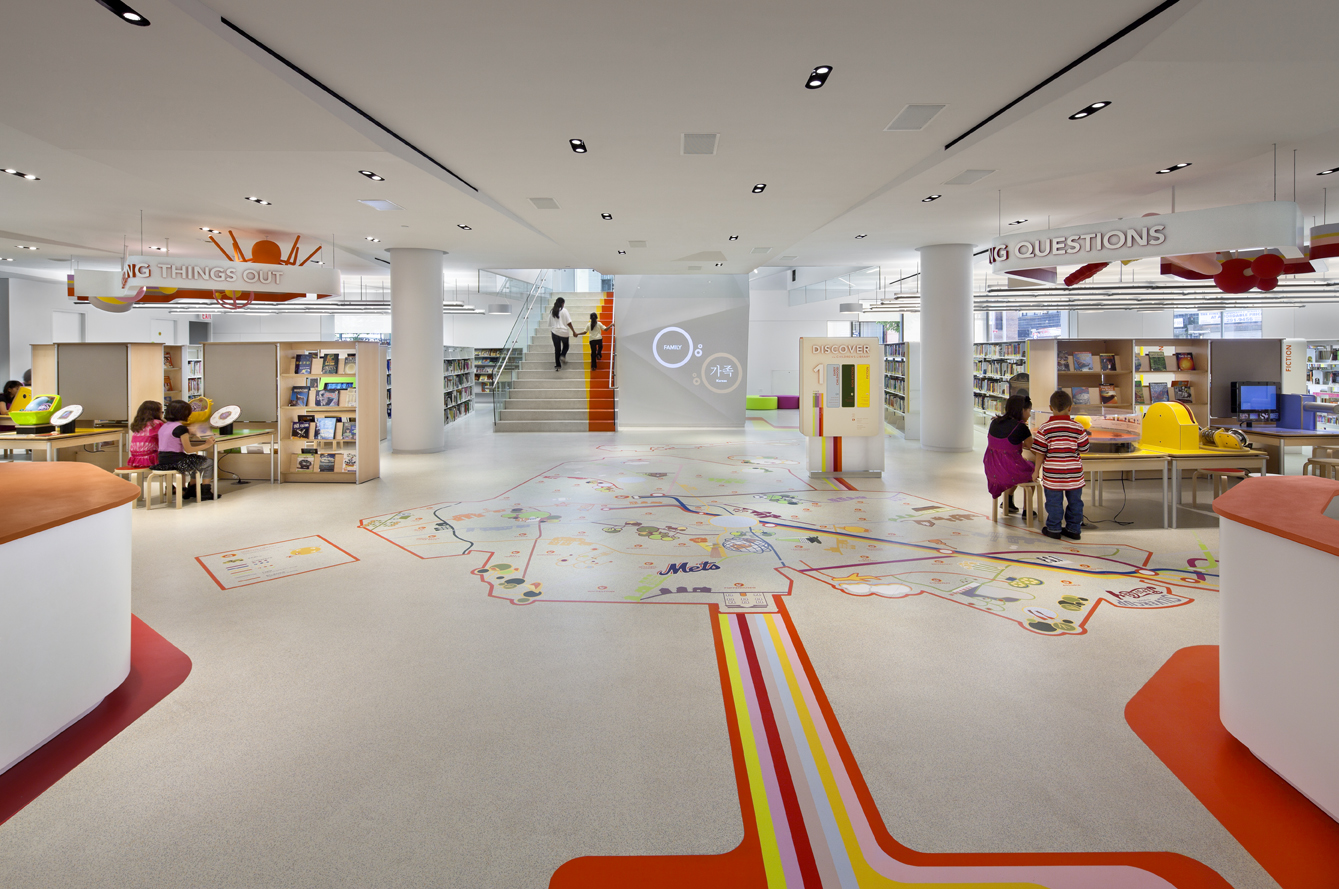
 Department of Design and Construction311
Department of Design and Construction311 Search all NYC.gov websites
Search all NYC.gov websites

Designing for All
How the City’s Libraries are Built for Equity
Today, libraries go beyond offering the latest books. They’re learning centers, event spaces, and often the hub of a neighborhood’s social scene. We aim to construct facilities that not only beautify the community, but also become part of the fabric of the neighborhood.
In other words, we design libraries to accommodate the needs of each community they serve. Whether it’s giving teens a safe place to study after school or hosting language learning classes for immigrants, the resources New York City’s libraries offer can help create a feeling of belonging and neighborhood unity.
Ifeoma Ebo is DDC’s design specialist on equity – this means she studies how design can help ensure all New Yorkers have access to the resources they need to thrive. According to DDC’s Guiding Principles, equitable design should:
-
Convey a sense of welcome to all
-
Ease access to resources
-
Strengthen communities
-
Respect histories and cultures
-
Evolve with needs and change
With those in mind, Ebo explores how public facilities, like libraries, contribute to community capital, inspire civic engagement, and increase neighborhood stability
“Each neighborhood has its own cultural facility,” she says. “It’s a space that strengthens the community by connecting people and getting them to interact with one another. Public facilities should support that neighborhood’s particular community capital – assets that are already developed and are working for the benefit of the community. This can be natural capital like historic trees, parks, and gardens, or social capital like community-based organization that offer a unique service, or economic capital in the form of local franchises.” .
There are 63 branches in the Queens Library system, 60 in the Brooklyn Public Library system, and 92 locations served by the New York Public Library. Ebo believes these libraries, and local cultural centers can help address unmet needs in communities using intentional design.
“Equity design looks completely different from location to location,” she says. “We design libraries to match the identity and fill in service gaps in neighborhoods where we build.”
Below are four libraries that incorporate equity design and promote unity in their own neighborhoods.

Convey a sense of welcome to all
The proposed renovation of East Flatbush Library uses equitable design to invite people into the facility. The opaque façade will reveal activity within the building and encourage passersby to interact with the people and resources inside, strengthening community connection and evoking a sense of transparency

Ease access to resources
The Children’s Library Discover Center integrates science-themed plazas throughout the library that promote children’s literacy and engagement in science, technology and math. This design uses an experiential learning environment to address the challenges faced by children with special needs in the local community.

Strengthen communities
Mariner’s Harbor Library, which opened in December 2013, is the 88th branch of the NYPL system, serving one of Staten Island’s most northwestern neighborhoods. Residents previously traveled over an hour to get to the nearest library until the new construction eased their access to this important resource and gave the community a central meeting place to connect.

Respect histories and cultures
The Elmhurst Library also uses a transparent façade and includes several amenities that fulfill critical needs lacking in this Queens neighborhood. The four-level branch features a cyber center for public use, an adult learning center, and training rooms located at the front of the facility that are highly visible from the street. The building also includes a memory wall, learning garden, historic photographs, and a children’s fireplace to commemorate the original branch’s design by Andrew Carnegie in 1906.





